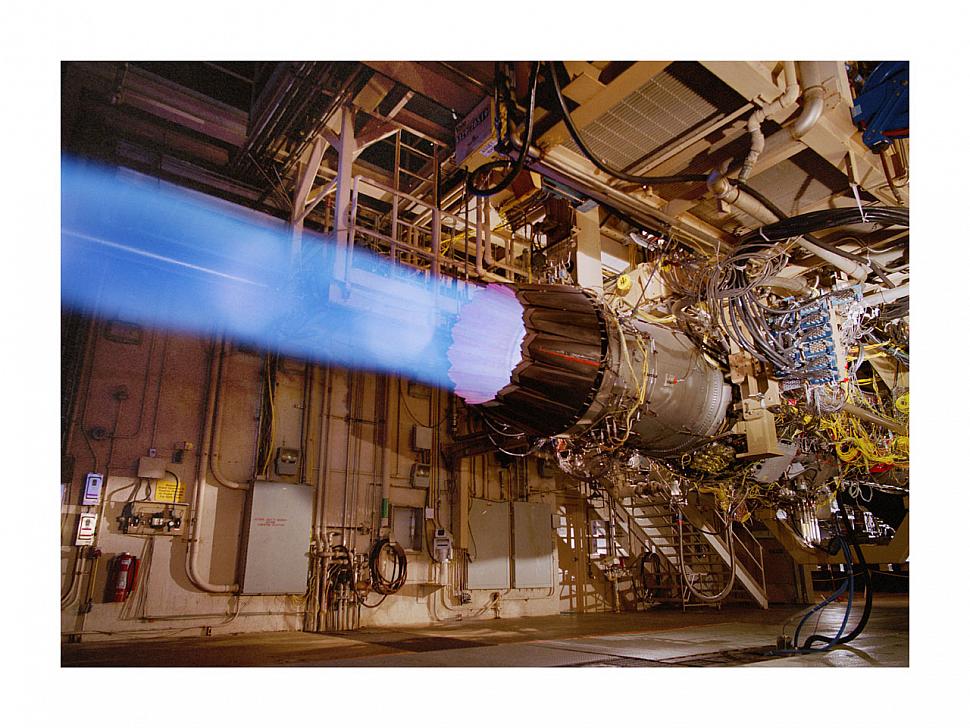Fighter Jet News
F-35 Lightning II News
PW completes Altitude Testing for F-35 STOVL Motor
April 6, 2008 (by
Eric L. Palmer) -
Pratt & Whitney completed all altitude testing necessary for flight qualification of the F135 short-takeoff/vertical-landing (STOVL) propulsion system at the U.S. Air Force Arnold Engineering Development Center in Tennessee.
As part of the F135 system development and demonstration (SDD) program, this test included more than 130 hours at various flight conditions demonstrating propulsion system performance, operability, afterburner capability and the ability of the engine control to detect and accommodate various simulated component faults.
"Our successful completion of altitude qualification testing brings us one step closer to STOVL flight qualification and powering the first flight of the STOVL variant of the F-35 Lightning II in up-and-away mode this May," said Bill Gostic, Pratt & Whitney vice president, F135 engine program.
This milestone is one of many recent achievements for Pratt & Whitney's F135 propulsion system. The F135 has previously completed sea level testing and accelerated mission testing for endurance and durability qualification. The F135 exceeded 9,500 SDD test hours. The F135 conventional take-off and landing (CTOL) engine continues to power the F-35 Lightning II flight test program with 40 flight tests and more than 48 flight test hours to date.
Rated at more than 40,000 pounds of thrust, the F135 is the most powerful fighter engine ever built. The technologically advanced F135 is an evolution of the highly successful F119 engine for the F-22 Raptor. By the time the F- 35 enters operation in 2013, the F119 engines are expected to have logged more than 600,000 flying hours and the F135 is expected to have logged more than 16,000 flying hours.
"Our successful completion of altitude qualification testing brings us one step closer to STOVL flight qualification and powering the first flight of the STOVL variant of the F-35 Lightning II in up-and-away mode this May," said Bill Gostic, Pratt & Whitney vice president, F135 engine program.
This milestone is one of many recent achievements for Pratt & Whitney's F135 propulsion system. The F135 has previously completed sea level testing and accelerated mission testing for endurance and durability qualification. The F135 exceeded 9,500 SDD test hours. The F135 conventional take-off and landing (CTOL) engine continues to power the F-35 Lightning II flight test program with 40 flight tests and more than 48 flight test hours to date.
Rated at more than 40,000 pounds of thrust, the F135 is the most powerful fighter engine ever built. The technologically advanced F135 is an evolution of the highly successful F119 engine for the F-22 Raptor. By the time the F- 35 enters operation in 2013, the F119 engines are expected to have logged more than 600,000 flying hours and the F135 is expected to have logged more than 16,000 flying hours.
SOURCE: Stephanie Duvall and Jennifer Whitlow, Pratt & Whitney Military Engines
Related articles:
Forum discussion:
Tags
- Pratt & Whitney F135 engine exceeds 9,000 SDD ground test hours ( 2008-03-03)
- Pratt & Whitney's F135 engine completes successful afterburner test ( 2007-02-01)
- Pratt & Whitney's F135 engine achieves 7,000 SDD ground test hours ( 2007-01-25)
- Pratt & Whitney F135 certified to power Lightning II's first flight ( 2006-10-23)
- F-35 Lightning II news archive
Forum discussion:
- Start a discussion about this article in the F-35 forum.
Tags

